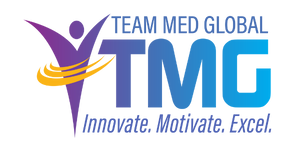 Over the past several years, the scope of work performed by Provider Lifecycle Professionals (PLPs) has grown dramatically. The role of PLPs continues to evolve, encompassing not only detailed process management but also strategic coordination, cross-functional collaboration, and system-wide impact. At TMG, we recognized that the competencies driving our profession needed to be updated to reflect this expanded responsibility.
Over the past several years, the scope of work performed by Provider Lifecycle Professionals (PLPs) has grown dramatically. The role of PLPs continues to evolve, encompassing not only detailed process management but also strategic coordination, cross-functional collaboration, and system-wide impact. At TMG, we recognized that the competencies driving our profession needed to be updated to reflect this expanded responsibility.
Today, we are proud to introduce the PLP Competency Model—a comprehensive framework that replaces the EMSP Core Competency model and redefines professional excellence across the provider lifecycle.
Why Now?
The healthcare environment is more complex than ever. From telemedicine and locum tenens credentialing to provider enrollment challenges and evolving regulatory standards, PLPs are operating in a fast-moving landscape that demands cross-functional knowledge and adaptable skills. The EMSP model served its purpose well, but it was built for a narrower, earlier version of the profession.
The new PLP Competency Model was developed in collaboration with subject matter experts from across the industry. It reflects the full depth and breadth of the PLP role and accounts for the nuanced differences that come with working in various environments—from hospitals to health plans, and from CVOs to FQHCs.
What’s New?
The PLP Competency Model organizes professional competence into three integrated components: Knowledge (Expertise), Skill (Effectiveness), and Execution (Direction). Together, they provide a comprehensive, actionable framework for evaluating and strengthening PLP contributions at every level.
The Knowledge component is domain-specific, reflecting the diverse environments in which PLPs operate. These domains include:
- Credentialing
- Credentials Verification Organizations (CVOs)
- Federally Qualified Health Centers (FQHCs)
- Licensing
- Managed Care
- Operations
- Privileging
- Provider Enrollment
- Quality
In each domain, the model maps a set of proficiencies that reflect real-world responsibilities—from technical knowledge like regulatory standards and documentation processes to broader areas like stakeholder engagement and performance metrics.
Meanwhile, Skill (Personal Effectiveness) and Execution (Career Direction) apply across all domains, supporting professional growth, leadership, and long-term impact. Together, these three dimensions—Knowledge, Skill, and Execution—offer a clear definition of what competence looks like in practice, not just in theory.
This model acknowledges that PLPs are applying judgment, fostering collaboration, managing risk, and influencing systems that directly affect patient care. The PLP Competency Model captures that reality and provides a shared language to support it.
What This Means for You
Whether you’re a new professional building your skillset or a seasoned expert refining your strategic impact, the PLP Competency Model offers a roadmap for growth. It can be used to:
- Identify gaps and strengths in professional development
- Inform job descriptions, performance evaluations, and training programs
- Build organizational alignment across departments
- Elevate the visibility and value of PLP contributions within the healthcare ecosystem
Next Steps
The rollout of the PLP Competency Model marks an exciting turning point for the profession. Over the coming months, TMG will be offering webinars, tools, and resources to help PLPs and healthcare organizations implement the model in meaningful ways.
By aligning our professional framework with the reality of today’s healthcare challenges, we’re not only raising the bar—we’re equipping PLPs to meet the moment with confidence and clarity.
We invite you to explore the model and begin integrating it into your daily practice. Because when PLPs thrive, healthcare thrives.

